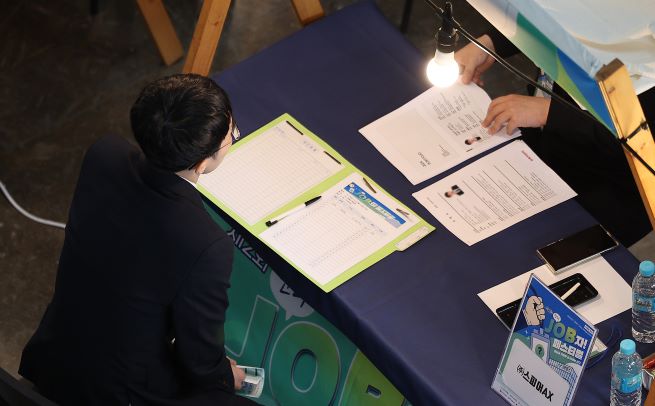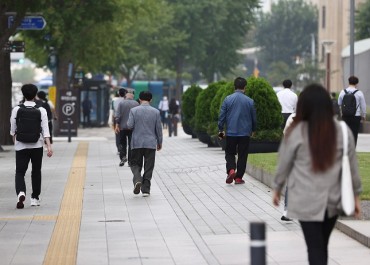SEOUL, Oct. 28 (Korea Bizwire) – Part-time employment among young workers has doubled over the past decade, leading to an unprecedented rise in non-regular employment among South Korea’s youngest workforce.
According to data released by Statistics Korea on October 27, as of August, there were approximately 1.46 million workers in their 20s heolding non-regular positions, representing 43.1% of the total 3.39 million wage workers in this age group. This marks the highest proportion since the government began tracking these statistics in 2003.
The number of young workers in temporary positions has steadily increased from 1.07 million in August 2014 to 1.16 million in 2017, 1.28 million in 2020, and 1.42 million last year. In contrast, regular employment has declined from 2.28 million in August 2014 to a historic low of 1.93 million this year, falling below 2 million for the first time since record-keeping began.
Over the past decade, while regular employment decreased by 346,000 positions, non-regular employment grew by 392,000 jobs. The total number of wage workers in their 20s increased by only 45,000 during this period.
The employment rate for workers in their 20s reached 61.7% this August, the highest since tracking began, up from 58.2% a decade ago. This improvement in employment figures has been largely driven by the increase in non-regular positions.
Part-time work has emerged as the dominant form of non-regular employment, with 817,000 young workers in such positions – an increase of 401,000 over the past decade. This far outpaces growth in other temporary work categories. The proportion of part-time workers among all wage workers has nearly doubled from 12.4% to 24.1% during this period.
Notably, 66.6% of young workers in non-regular positions reported choosing these roles voluntarily – the highest percentage ever recorded. Among these, 59.9% cited satisfaction with working conditions as their primary reason.
The trend may reflect both changing preferences among young workers who seek more flexible schedules and shifts in the job market, where employers increasingly favor experienced workers and year-round hiring over regular recruitment cycles. Many young people are taking temporary positions to gain relevant experience.
A May survey found that 31.4% of employed youth (aged 15-29) reported their first job had a contract term of one year or less – the highest figure since this data point was first tracked.
While other age groups have seen declining proportions of temporary workers, with peak levels recorded years ago – 32.2% for workers in their 30s in 2004, 36.3% for those in their 40s in 2005, and 43.4% for those in their 50s in 2004 – the trend among young workers continues upward.
Kim Ji-yeon, a forecasting coordinator at the Korea Development Institute (KDI), noted that workers in their 20s tend to be most affected by employment market adjustments, suggesting this could partly explain the rising proportion of temporary positions among young workers.
Ashley Song (ashley@koreabizwire.com)







